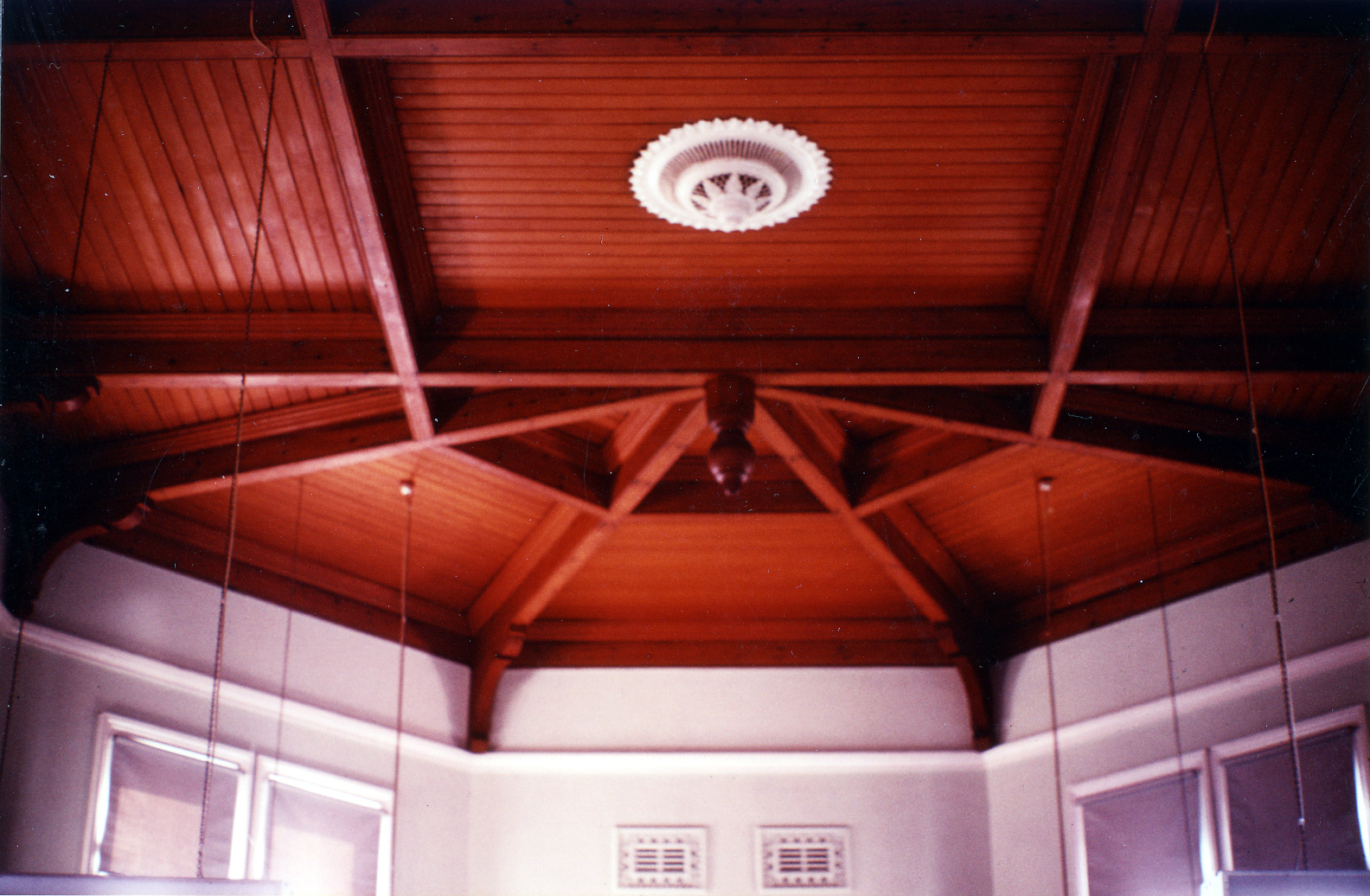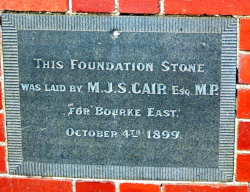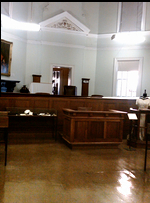
The old Heidelberg Court House, which is now the Museum of the Heidelberg Historical Society, was opened in 1900, replacing an earlier wooden structure. In the 1960s, the red brick building was judged to be inadequate and was replaced by a modern one further down Jika Street.
The Museum Today
As you enter the Museum from the front door, galleries extend on either side. At one time, the galleries had attractive lead-light windows. The roof was covered with slates and the building fronted with a picket fence.
The main area was the body of the court. The magistrates bench faces the visitor imposingly. To the right is the witness box and to the left, the dock, in which the accused would be seated. This is our main exhibition area.
Display cases contain items that refer to pioneers, early transport, houses, churches, sport, cultural organisations, hotels and famous people. Special exhibitions from time to time provide an in-depth focus on a particular theme (eg, an object, a person, a place or an event).
Behind the Magistrate's Bench, a passage leads to the Research Room, which houses early newspapers, cuttings, books and brochures and our large collection of photographs. Visitors can ask one of the museum staff if they wish to delve into our files and documents. Materials can be photocopied on request, at a small charge.

 The foundation stone of the new courthouse was laid on 4 October 1899, and work continued throughout the summer, in time for the opening and first court on 2 April 1900. Accounts of the opening appear in Articles 2 and 3 below.
The courthouse continued in use until 1979 when a new modern courthouse was built in Jika Street nearby. With the help of our local member, Bruce Skeggs, and the Minister for Public Works, the Hon. Roberts Dunstan, the Heidelberg Historical Society was able to acquire the old building for our Museum.
The foundation stone of the new courthouse was laid on 4 October 1899, and work continued throughout the summer, in time for the opening and first court on 2 April 1900. Accounts of the opening appear in Articles 2 and 3 below.
The courthouse continued in use until 1979 when a new modern courthouse was built in Jika Street nearby. With the help of our local member, Bruce Skeggs, and the Minister for Public Works, the Hon. Roberts Dunstan, the Heidelberg Historical Society was able to acquire the old building for our Museum.